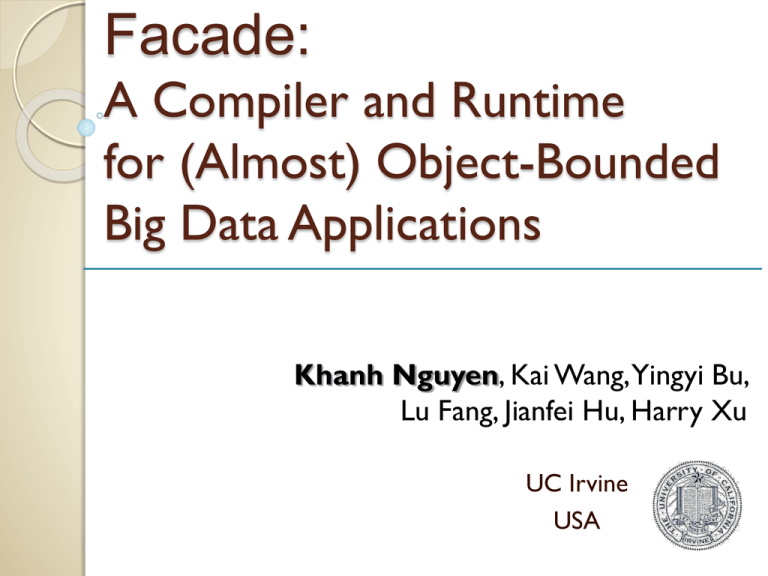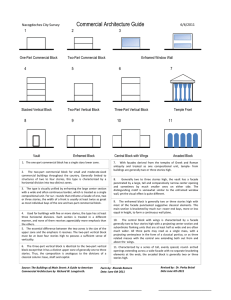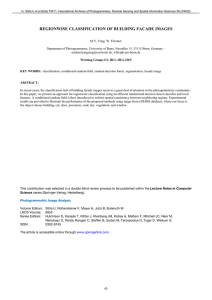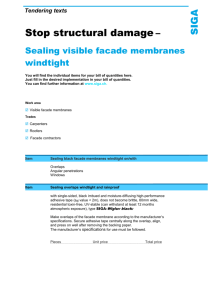Facade: A Compiler and Runtime for (Almost) Object-Bounded Big Data Applications
advertisement

Facade:
A Compiler and Runtime
for (Almost) Object-Bounded
Big Data Applications
Khanh Nguyen, Kai Wang, Yingyi Bu,
Lu Fang, Jianfei Hu, Harry Xu
UC Irvine
USA
Scalability
◦ JVM crashes
due to
OutOfMemory
error at early stage
Management cost
◦ GC time accounts
for up to 50% of the
execution time
[Bu et al. ISMM ’13]
Golden rule for scalability
The number of heap objects and references
must not grow proportionally
with the cardinality of the dataset
Non-intrusive technique
Statically
bound the
Operate atof
compiler
level objects
number
data
General and practical
in the heap
Require minimal user’s effort
Facade
Use
execution model
the off-heap,
native memory to
store unbounded
data items
Create
heap
objects only for
control purposes
◦ Bounded object
pooling
Benefits from Facade
Significantly
reduced GC time
Reduced
memory consumption
Reduced
memory access costs
Reduced
execution time
Improved
scalability
Static bound of data objects
• s : cardinality of the data set
• t : number of threads
• n : number of data types
• p : number of pages
Data representation
Native memory
id
name
students
Memory address is used as object reference (pointer)= pageRef
Data manipulation
Object
references are substituted by
pageRef
Professor p = f;
Objects
long pRef = fRef;
are created as facades for
control purposes
p.addStudent(s);
Have only pRef and sRef
ProfessorFacade pf = professorPool[0];
StudentFacade sf = studentPool[0];
pf.pageRef = pRef;
sf.pageRef = sRef;
pf.addStudent(sf);
void addStudent(StudentFacade sf) {
long thisRef = this.pageRef;
long sRef = sf.pageRef;
//...
}
p.addStudents (s1,s2,s3,s4,s5)
pf.addStudents (sf1,sf2,sf3,sf4,sf5)
pf = professorPool[0];
sf1
sf2
sf3
sf4
sf5
=
=
=
=
=
studentPool[0];
studentPool[1];
studentPool[2];
studentPool[3];
studentPool[4];
Challenge 1
Dynamic
dispatch
◦ Use type ID in the record’s header
◦ Parameter facade pool
◦ Separated receiver facade pool
p.addStudent(s);
ProfessorFacade pf =
FacadeRuntime.resolve(pRef);
Challenge 2
Concurrency:
◦ Thread-local facade pooling
Object lock
lockspool to support object locks
◦ Global
enterMonitor(o);
…
exitMonitor(o);
Get a free lock l from the
lock pool;
Write l into the lock
field of oRef
l.compareAndInc();
enterMonitor(l);
…
exitMonitor(l);
if(l.compareAndDec()
== 0){
Write 0 into the lock
field of oRef
return l to the pool;}
Memory management
Allocation
◦ High-performance parallel allocator
Thread-local managers
Uses different size classes
Insights:
◦ Data-processing functions are iteration-based
◦ Each iteration processes distinct data partition
◦ Data objects in each iteration have disjoint lifetime
Deallocation
◦ Use a user-provided pair of calls to recycle pages:
iteration_start() && iteration_end()
◦ Iterations are well-defined --- it took us only a few minutes to
find iterations and insert callbacks in GraphChi
Other supports
Optimizations:
◦ Object inlining for records whose size is
known statically
◦ Oversized pages for large arrays
◦ Type specialization
◦…
Support
most of Java 7 features
Details can be found in the paper
Experiments
3 frameworks, 7 applications
GraphChi [Kyrola et al. OSDI’12]
◦ High-performance graph analytical framework for
a single machine
Hyracks [Borkar et al. ICDE’11]
◦ Data parallel platform to run data-intensive jobs
on a cluster of shared-nothing machines
GPS [Salihoglu and Widom SSDBM’13]
◦ Distributed graph processing system for large
graphs
GraphChi
1.4
1.2
1
0.8
0.6
0.4
0.2
0
1.4
1.2
1
0.8
0.6
0.4
0.2
0
Page Rank
4G
6G
8G
Total time
Update time
Load time
GC time
Memory
Connected
Component
4G
6G
8G
Total time
Update time
Load time
GC time
Memory
GraphChi - Throughput
15
11
9
7
Throughput (edges/sec)
13
X 105
Facade
Original
5
3
PR
CC
PR'
CC'
Number of edges x 108
1
1
3
5
7
9
11
13
15
17
Hyracks
1.4
1.2
External Sort
1
Total time
0.8
GC time
0.6
Memory
0.4
0.2
Memory Usage (GB)
0
8
3G
5G
10G
14G
19G
6
Word Count
The original program
crashed in all of these sets
thus no figure
4
2
0
3G
5G
Original
10G
Facade
14G
19G
GPS
35
%
Page Rank, KMeans & Random Walk
◦ Reduction in largest graph: 120M vertices, 1.7B edges
30
32.1
30.8
25
23.1
20
15
17.3
13.5
10
10.9
5
0
PageRank
KMeans
RandomWalk
PageRank
KMeans
RandomWalk
GPS
Page Rank, KMeans & Random Walk
◦ Average cumulative reduction
5
%
35
4.47
4
3.43
3
2
%
30
30.31
25
20
2.75
15
10
1
15.63
8.87
5
0
0
PageRank
KMeans
RandomWalk
PageRank
KMeans
RandomWalk
Results
GraphChi (Page Rank & Connected Components)
◦
◦
◦
◦
Hyracks (Word Count & External Sort)
◦
◦
◦
◦
Up to 6.4x reduction in GC time
Up to 28% reduction in memory usage (6+GB datasets)
Up to 48% reduction in execution time
1.4x improvement in throughput
3.8x improvement in scalability
Up to 88x reduction in GC time
Up to 32% reduction in memory usage
Up to 10% reduction in execution time
GPS (Page Rank, KMeans & Random Walk)
◦ Up to 40% reduction in GC time
◦ Up to 15% reduction in execution time
Conclusion
Facade
is a complete package:
◦ Compiler: automatically transform
existing programs
◦ Runtime system: run on top of JVM,
i.e., no modification of JVM
Thank you!






